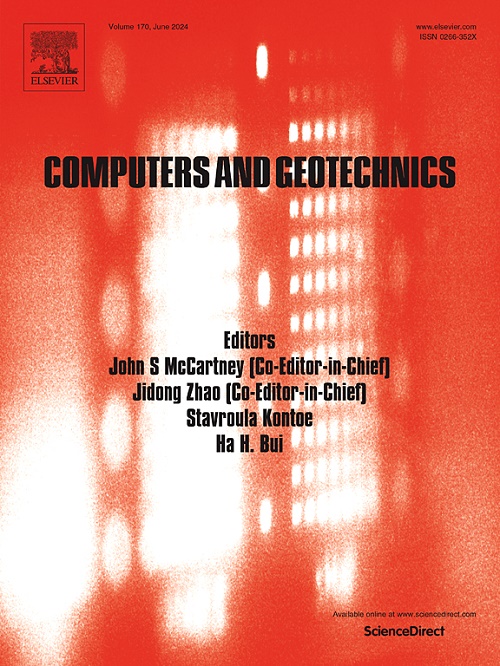Four-dimensional lattice spring method using a level set approach for contact problems in geomechanics
IF 5.3
1区 工程技术
Q1 COMPUTER SCIENCE, INTERDISCIPLINARY APPLICATIONS
引用次数: 0
Abstract
Lattice Spring Methods (LSM) have gained increasing attention in recent years due to their effectiveness in handling fracturing and nonlinear problems. However, their ability to address general contact issues in geomechanics remains limited. Directly handling contact using discrete geometry often results in local locking, a common challenge in particle-based methods like DEM and LSM. This work introduces a level set approach to overcome this limitation. Block and granular geometries are represented by a level set function, which is also employed to manage contact interactions between blocks and granules. A specialized contact algorithm is developed for the lattice model using a signed distance function (SDF) that accounts for lattice discretization. The new LS-4D-LSM demonstrates its capability to solve complex contact problems through various numerical examples, including both deformation and fracturing of blocks. Given that contact plays a key role in many geomechanics tests, incorporating realistic contact behavior into these analyses leads to a more accurate fit with experimentally observed data. This suggests that the digital twin concept could be a powerful tool for analyzing experimental data in geomechanics. The proposed method is also applicable to other numerical approaches, such as DEM, enhancing their ability to handle deformable and fragmentable blocks or granules.
求助全文
约1分钟内获得全文
求助全文
来源期刊

Computers and Geotechnics
地学-地球科学综合
CiteScore
9.10
自引率
15.10%
发文量
438
审稿时长
45 days
期刊介绍:
The use of computers is firmly established in geotechnical engineering and continues to grow rapidly in both engineering practice and academe. The development of advanced numerical techniques and constitutive modeling, in conjunction with rapid developments in computer hardware, enables problems to be tackled that were unthinkable even a few years ago. Computers and Geotechnics provides an up-to-date reference for engineers and researchers engaged in computer aided analysis and research in geotechnical engineering. The journal is intended for an expeditious dissemination of advanced computer applications across a broad range of geotechnical topics. Contributions on advances in numerical algorithms, computer implementation of new constitutive models and probabilistic methods are especially encouraged.
 求助内容:
求助内容: 应助结果提醒方式:
应助结果提醒方式:


